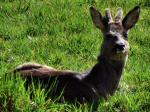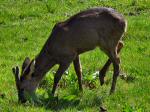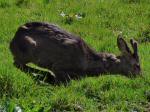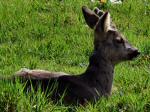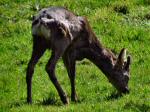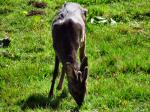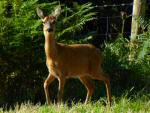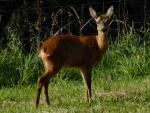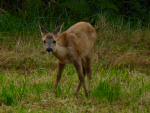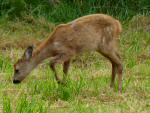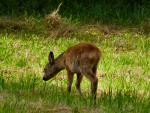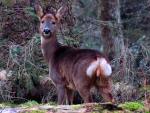Scientific name - Capreolus capreolus
There are six species of deer currently living wild in Britain. These
are Red deer (Cervus elaphus), Roe deer (Capreolus
capreolus), Fallow deer (Dama dama), Muntjac (Muntiacus reevesi), Sika
(Cervus nippon) and Chinese water deer (Hydropotes inermis).
Roe deer (like Red deer) are native to Britain, having been present here
for over 10,000 years. They became extinct in England during the 18th
century, but survived in wooded parts of the Central and North West Highlands
of Scotland. Many populations were reintroduced in England during Victorian
times and they are now widespread and abundant today. Indeed recent reports
have claimed that Britain’s deer population is out of control with
numbers now reaching levels that are causing serious damage to Britain’s
woodlands, its fauna and its bird-life. A medium-sized deer with a body
length of 3 to 4.5 feet and a shoulder height ranging between 2 to 2.5
feet, the roe is mostly brown in colour, turning reddish in the summer
and darker grey in the winter. They have a white rump patch with a practically
invisible tail approximately 1 inch long. Only the males have antlers;
relatively short ones that they begin to grow in November after shedding
them in October. The roe doe is smaller in size than the buck and their
white rump patch is the shape of an inverted heart (often with a tuft
of white hair), whereas males have a kidney-shaped patch. Roe Deer tend
to be solitary in summer, but can form small, loose groups in winter.
|
